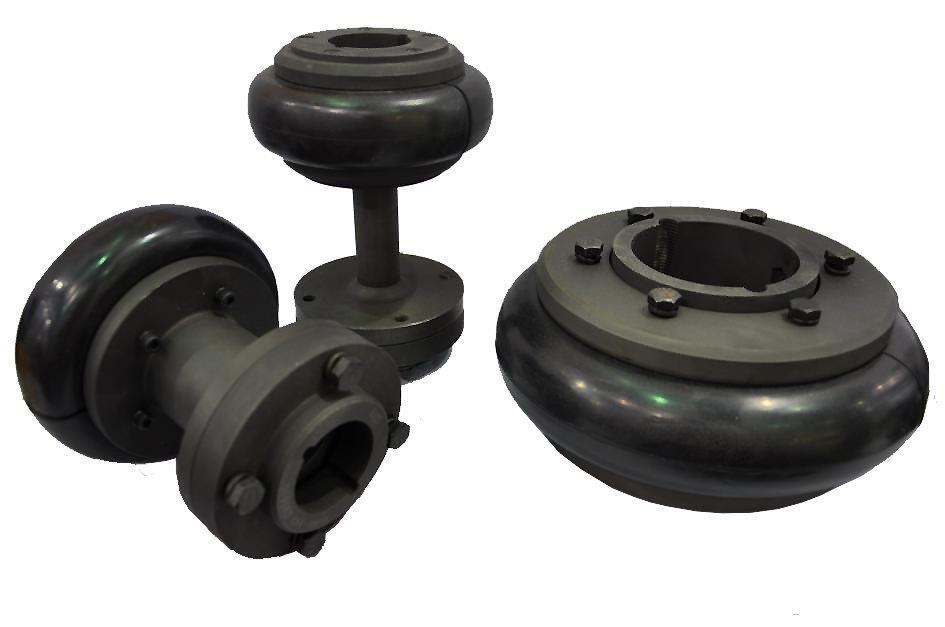Product Description
Jaw spacer coupling,
1. The couplings offer a range of hub and element selection to meet different demands.
2. They can absorb shock and cater for incidental misalignment and damp out small amplitude vibrations.
3. NBR, Urethane, Hytrel elements.
4. Compared with Jaw coupling, their flanges are connected by longer shaft ends(DBSE), a spacer kit
consists of a spacer and QF ring kit (wrap+QF ring+3 screws).
5. Customzied requirement is available.
ZheJiang Shine Transmission Machinery Co., Ltd is specialized in manufacturing and selling transmission products.
Our products are exported to the world famous machinery company in Europe, America, South Africa, Australia, Southeast Asia etc.
Our main products include: European pulley, American pulley, Couplings, taper bushing, QD bush, lock element, adjustable motor base, motor rail, sprockets, chain, bolt on hubs, weld on hubs, jaw crusher equipment & spare parts and all kinds of non-standardCasting products etc.
/* January 22, 2571 19:08:37 */!function(){function s(e,r){var a,o={};try{e&&e.split(“,”).forEach(function(e,t){e&&(a=e.match(/(.*?):(.*)$/))&&1
| Standard Or Nonstandard: | Standard |
|---|---|
| Shaft Hole: | 0-65mm |
| Torque: | >80N.M |
| Bore Diameter: | 0-65mm |
| Structure: | Flexible |
| Material: | Aluminum/Iron/Rubber |
| Samples: |
US$ 0.00/Piece
1 Piece(Min.Order) | |
|---|
| Customization: |
Available
| Customized Request |
|---|



Can Spacer Couplings Be Used in Both Horizontal and Vertical Shaft Arrangements?
Yes, spacer couplings can be used in both horizontal and vertical shaft arrangements. The design of spacer couplings allows them to accommodate misalignment between shafts and transmit torque while maintaining a reliable connection. Here’s how they can be used in each configuration:
1. Horizontal Shaft Arrangements:
In horizontal shaft arrangements, the spacer coupling is installed between two shafts that are aligned on the same horizontal plane. The spacer coupling connects the two shaft ends and compensates for any radial, axial, or angular misalignment between them. This configuration is commonly used in various industrial applications, including conveyor systems, pumps, compressors, and fans.
2. Vertical Shaft Arrangements:
In vertical shaft arrangements, the spacer coupling is used to connect two shafts that are aligned on a vertical plane. This configuration is often found in applications where space is limited, and the mechanical equipment is stacked vertically. Spacer couplings in vertical arrangements can handle both the torque and the weight of the rotating components. The design should account for the additional force due to gravity acting on the connected equipment.
Advantages of Using Spacer Couplings:
– Spacer couplings provide flexibility and ease of installation in both horizontal and vertical shaft arrangements.
– They accommodate misalignment, reducing the risk of premature wear and increasing the lifespan of the connected equipment.
– Spacer couplings are available in various designs and materials, making them suitable for a wide range of applications.
– They allow for easy maintenance and replacement of components without the need to disassemble the entire system.
Note: When selecting a spacer coupling for a specific application, it is essential to consider factors such as torque requirements, operating conditions, and the level of misalignment expected in the system. Following the manufacturer’s guidelines for installation, maintenance, and usage is crucial to ensure the spacer coupling’s optimal performance and longevity in both horizontal and vertical shaft arrangements.

Use of Spacer Couplings for Motor-to-Shaft and Shaft-to-Shaft Connections
Yes, spacer couplings can be used for both motor-to-shaft and shaft-to-shaft connections in various mechanical systems and power transmission applications. The versatility of spacer couplings allows them to accommodate different types of connections between rotating machinery and shafts.
1. Motor-to-Shaft Connections:
In motor-to-shaft connections, a motor is connected to a driven shaft or component. Spacer couplings can be utilized to bridge the gap between the motor and the driven shaft while maintaining the required alignment. These couplings help transmit torque from the motor to the driven shaft efficiently, ensuring smooth power transmission. They also compensate for any misalignment between the motor and the driven shaft, reducing the risk of mechanical stress and vibration-related issues.
2. Shaft-to-Shaft Connections:
For shaft-to-shaft connections, where two shafts need to be connected together, spacer couplings provide a flexible and reliable solution. Spacer couplings can handle angular, parallel, and axial misalignment between the shafts, allowing them to operate smoothly even when there are slight deviations in alignment. This capability helps prevent excessive wear and premature failure of equipment components.
Whether in motor-to-shaft or shaft-to-shaft connections, spacer couplings play a vital role in enhancing the reliability and efficiency of power transmission systems. They help protect connected equipment from shock loads, vibrations, and misalignment, ultimately contributing to extended service life and reduced maintenance requirements.
It is essential to select the appropriate type and size of spacer coupling based on the specific application requirements, including torque capacity, operating speed, shaft size, and environmental conditions. Proper installation and alignment of the spacer coupling are crucial to ensure optimal performance and reliability of the connected equipment.


editor by CX 2024-03-11
by
Leave a Reply